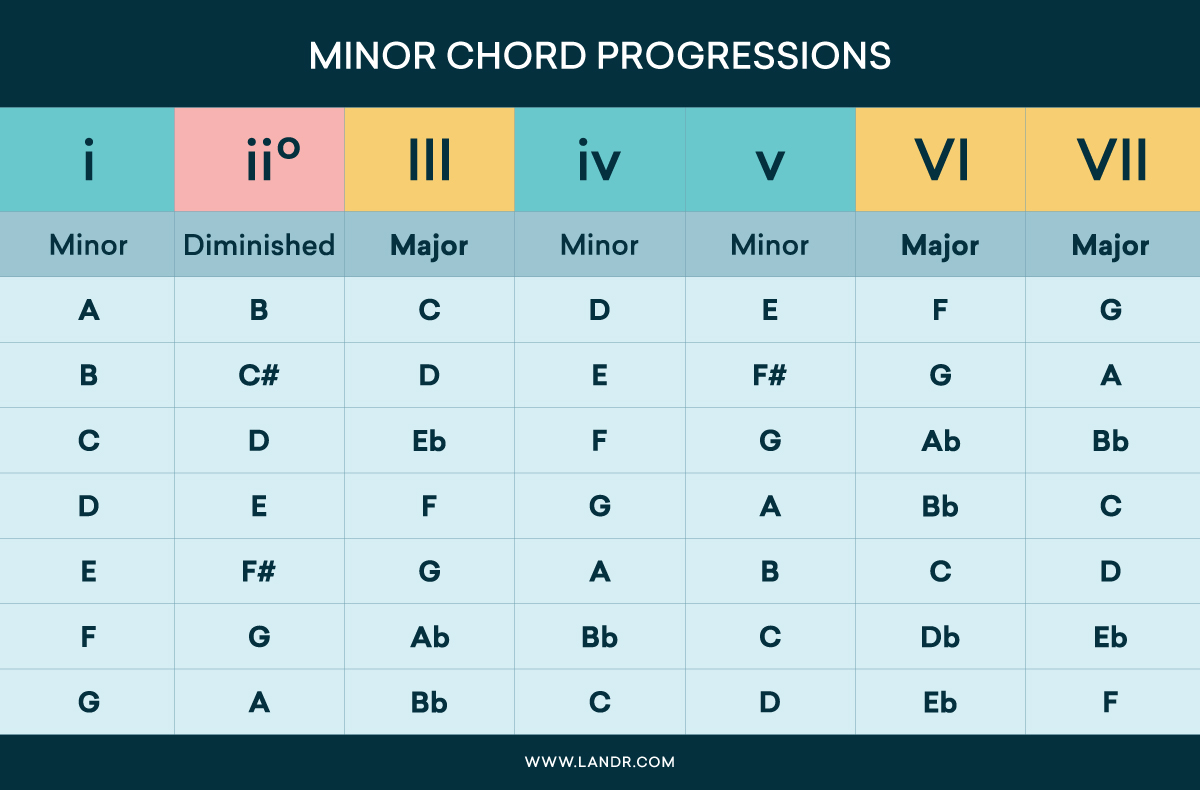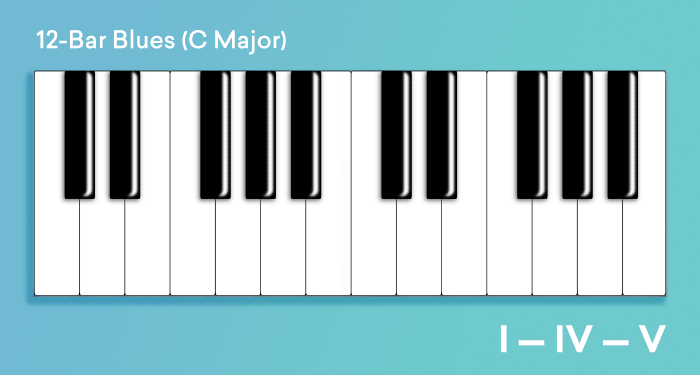Nothing’s more essential for songwriters than mastering the art of writing chord progressions.
Skills such as chord building and understanding the way to listen for chords in the music you listen to are vital, however, neither matter unless you could put the right chord in the right place in your progressions.
With the limitless possibilities chords provide, it could be hard to get began or tempting to write the same boring progressions over and over again and it’s hard to gain more listener.
In this article, you will learn what chord progressions are, the way to arrange chords in your songwriting, and how to use them in your songs.
What are chord progressions?
Chord progressions are series of 2 or more chords used in a piece of music. The chords in a progression are represented by Roman numerals and are determined by the key.
From Beach House to Beethoven, chord progressions determine how a piece of music unfolds over time.
Additionally, they play an enormous part in the narrative of your track. A certain chord at a certain time in a chord progression could drastically change the narrative of your track from happy to sad or dark to light with one easy chord choice.
One major, minor or diminished chord could not do much storytelling on their own. However, even easy, repetitive progressions of chords have the power to convey a complex array of feelings and musical ideas.
There are happy chord progressions, unhappy chord progressions, easy chord progressions, and really advanced chord progressions.
With a great chord progression as your base, other elements of your track—like lead melodies or basslines—become much simpler to come up with based on the chords you have chosen and where they sit.
When you are questioning how to write a track and do not know where to begin with your arrangement, chord progressions are absolutely the way to go.
However, when you are new to writing, or just do not have a strong music theory background, understanding how chord progressions work could get tricky.
Do not you worry! This article is here to help.
Roman numerals in music
Because all of the note-to-note relationships in music are permanent, you could use symbols as a time-saving shorthand to know how chords work in your music.
Roman numerals are the symbols most commonly used to explain how chords work within keys. Keys in music are sets of notes built on repeating patterns—think major and minor.
Here’s the great news in case you aren’t particularly fond of complicated music theory concepts: All of music’s major and minor keys function the exact same repeating sequence of chords.
Memorize just two sequences, and you will have a simple method to understand chord progressions.
Chords in major key
Let’s begin with major keys. The Roman numeral sequence for chords in major keys look like this:
As you could see from the useful chart, if we are using C major as an example, our easy progression would look like this:
C—Dm—Em—F—G—Am—Bdim
This example shows you chords in the key of C, however, this group of chords is found in every other major key as well.
Large Roman numerals like the I, IV and V represent major chords. The smaller ones, like i, iv and v represent minor chords, and that small one at the end with the circle next to it represents a diminished chord.
Chords in minor key
The Roman numeral sequence for chords in minor keys look like this:
Let’s use A minor this time. Your chord progression in A minor would look like this:
Am—Bdim—C—Dm—Em—F—G
The sequence of chords in minor keys has the same kinds of chords as majors, however, in a different order.
Popular chord progressions in music
Chord progressions like the 12-bar blues could be found all over popular music.
The 12-bar blues is built on the I, IV and V chords, and everybody from punk bands to jazz composers has used some type of the progression in their music.
Right here are the chords in the key of C Major:
Listen for the chord progression in this 12 bar blues jam and select the changes in chords.
Then there’s the pop-punk progression. Do not let the name fool you, this progression goes wayyyyy beyond pop-punk and ‘pops’ up everywhere in a ton of famous songs.
This chord progression staple is built on the chords I–V–vi–IV. Right here’s what the chords look like in the key of C Major:
It could be heard in “Let It Be” by The Beatles, Green Day’s “When I Come Around” and countless other hits.
How to use chord progressions in your songs: Getting started
Relying on the kind of music you make, your chord progressions could range from easy, repetitive and predictable to complex and even a bit erratic.
It isn’t super common, however, there are loads of songs out there built on just two repeating chords. When you are new to songwriting, I recommend beginning with the easy route by building a chord progression with just 2 or 3 chords.
Giving yourself the time and freedom to discover putting chords together is the only method to write something that works. Use the charts above to play some basic progressions, then begin building your own based on what sounds good. There are no real rules for progressions, it’s up to your ear in the end.
Expanding your progressions
This article shows you the way to understand chord progressions that stay within one key, however, music would be awfully boring if songwriters and composers used only one key per track.
When you understand the basics, attempt to experimenting with key changes and chord variations on your own.
The information in this post is not an end point—far from it. Instead, it’s a starting point for your songwriting… Where you go after is as much as you.
The theory is good for explaining why music works the way it does, however, nothing can substitute the incredible musical intuition of your own ears.
So as soon as you are comfortable, try pairing together chords from unrelated keys and write down what chord mixtures you resonate with—your songwriting will develop in no time.





